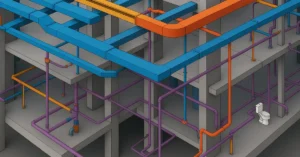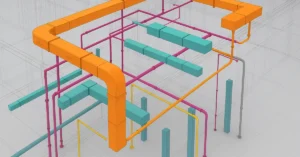The Silent Sentinels: How Architecture and Buildings Shape the Outcomes of War
Impact of Architecture on War: Warfare is a complex and multifaceted endeavor where numerous factors come into play to determine the outcome of conflicts. One often overlooked, yet highly significant aspect is the role of architecture and buildings in influencing the course of war. In this blog post, we’ll delve into how architecture impacts military strategies, tactics, and the overall conduct of wars.
1. The Power of Defensive Structures

Throughout history, architectural marvels have played a crucial role in warfare. Castles, fortifications, and city walls have been the silent sentinels that guarded against invasions and shaped the strategies of attacking armies. These imposing structures made it significantly more difficult for adversaries to breach their defenses, often leading to long, protracted sieges.
1.1 Castles and Fortifications
- Castles and fortifications as impervious barriers.
- Prolonged sieges and defensive advantages.
1.2 The Great Wall of China
- Protection against northern invasions.
- Extension of conflict durations and defender’s advantage.
2. Urban Warfare and Street Fighting
Urban warfare is a brutal and complex form of combat that arises when military operations take place within cities and towns. The urban environment drastically alters the dynamics of warfare, and architecture is at the core of this transformation.
2.1 Characteristics of Urban Warfare
- Narrow streets, tall buildings, and tight alleyways.
- Opportunities for ambushes and hit-and-run tactics.
2.2 The Battle of Stalingrad
- Use of urban architecture to slow down the enemy.
- Urban environment as a tactical advantage.
3. Strategic Targets and Symbolism
In modern warfare, architecture extends its influence beyond the battlefield to strategic targets and symbols. Significant buildings and landmarks often become high-priority targets, as their destruction can send a powerful message to the enemy or the world.
3.1 Allied Bombing Campaign in World War II
- Targeting key infrastructure in Germany and Japan.
- Damage to architectural assets hinders the enemy’s war effort.
3.2 Symbolic Targets
- Twin towers of the World Trade Center as symbolic targets.
- Profound impact on global geopolitics and the War on Terror.
4. Stealth and Camouflage
The architectural design can also have an impact on military strategies by offering opportunities for stealth and camouflage. Buildings can be strategically positioned to provide cover and concealment for troops and equipment. This is particularly relevant in modern warfare, where urban areas may be dotted with high-rises, providing ample opportunities for snipers, reconnaissance, and surveillance.
4.1 Tactical Use of Architecture
- Concealment, cover, and advantages in urban warfare.
- Camouflage within architectural surroundings.
4.2 Innovations in Military Architecture
- Buildings designed to blend into natural surroundings.
- Use of innovative materials for inconspicuous military architecture.
5. Economic Impact
The architecture and buildings of a nation can influence the economics of war. The destruction of industrial facilities, power plants, and transportation networks can severely disrupt the economic capacity of a nation to sustain a war effort. Thus, a key aspect of strategic planning in warfare is targeting architectural assets that are vital for an adversary’s economic stability.
5.1 Economic Disruption
- Targeting industrial facilities and infrastructure.
- Severely disrupting an enemy’s economic capacity.
5.2 Post-War Reconstruction
- The cost and complexity of rebuilding damaged cities and infrastructure.
- The role of architecture in the recovery and resilience of nations post-war.
Conclusion
Architecture and buildings are more than just bricks and mortar; they are integral components of the battlefield. Their design, placement, and destruction can profoundly influence the course and outcome of war. From the defensive power of fortifications to the intricacies of urban warfare, and from the symbolism of strategic targets to the economic implications of their destruction, architecture is an omnipresent yet often underestimated force in the theater of war. Understanding its impact is crucial for strategists, historians, and all those who seek to comprehend the complexities of conflict throughout history.
If you’re interested in learning more about architecture firms in Europe, check out this comprehensive list of the top 50 firms compiled by Archgyan. From innovative startups to long-established industry leaders, this list has it all. Take a look and discover some of the most inspiring and influential architecture firms in Europe today.
If you’re interested in architecture and want to learn more about this amazing field, subscribe to our podcast on youtube
For more SketchUp tutorials, head to https://www.sketchupguru.com










